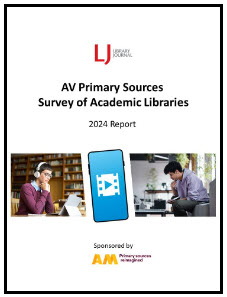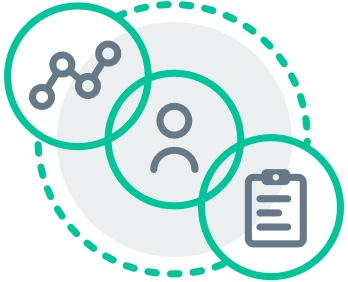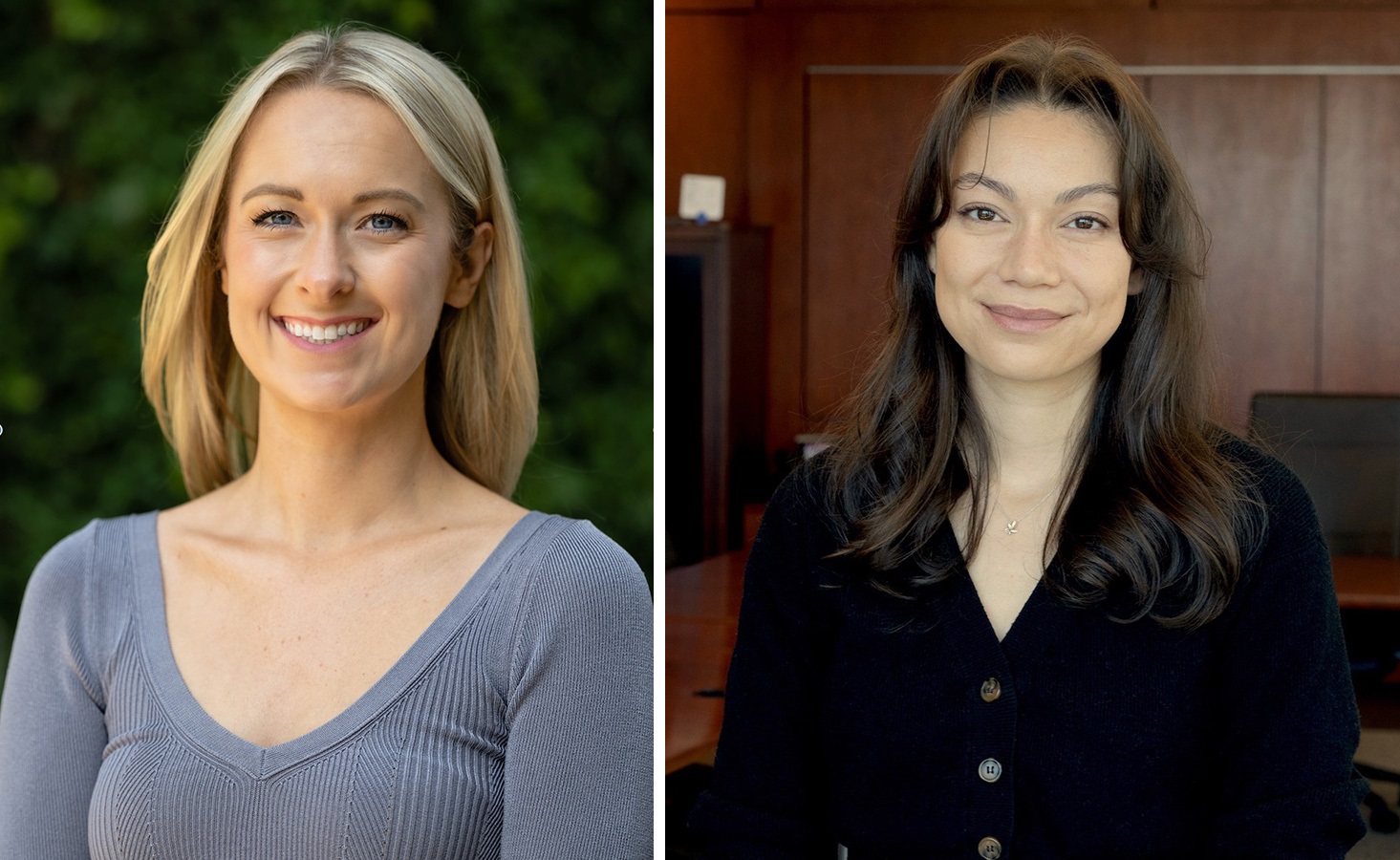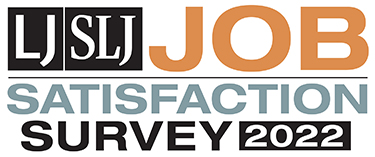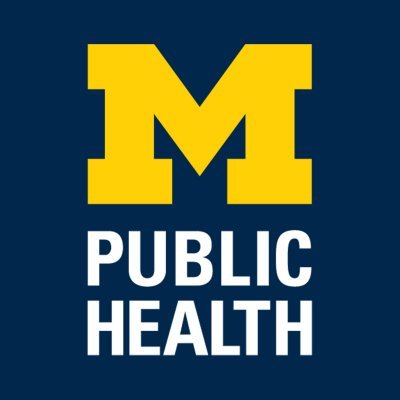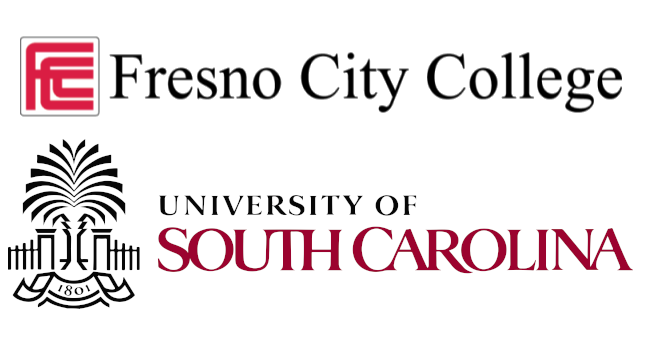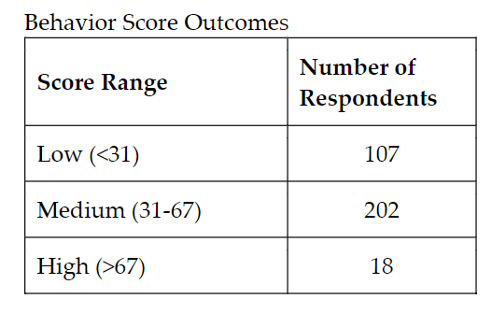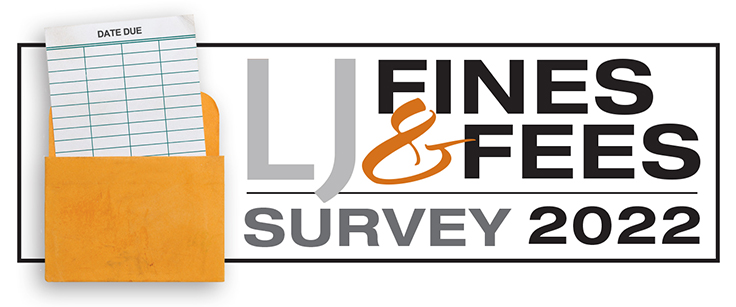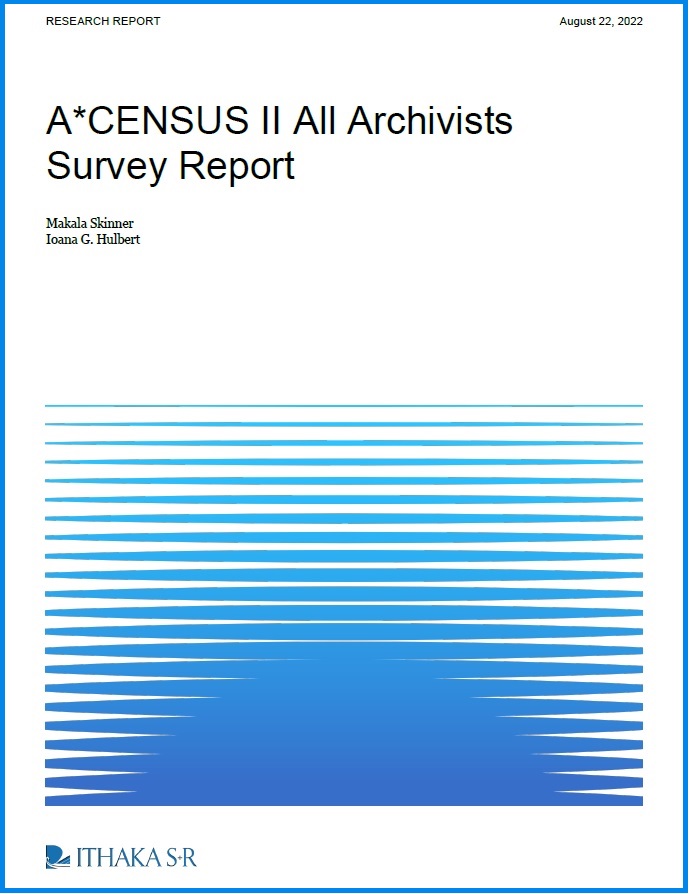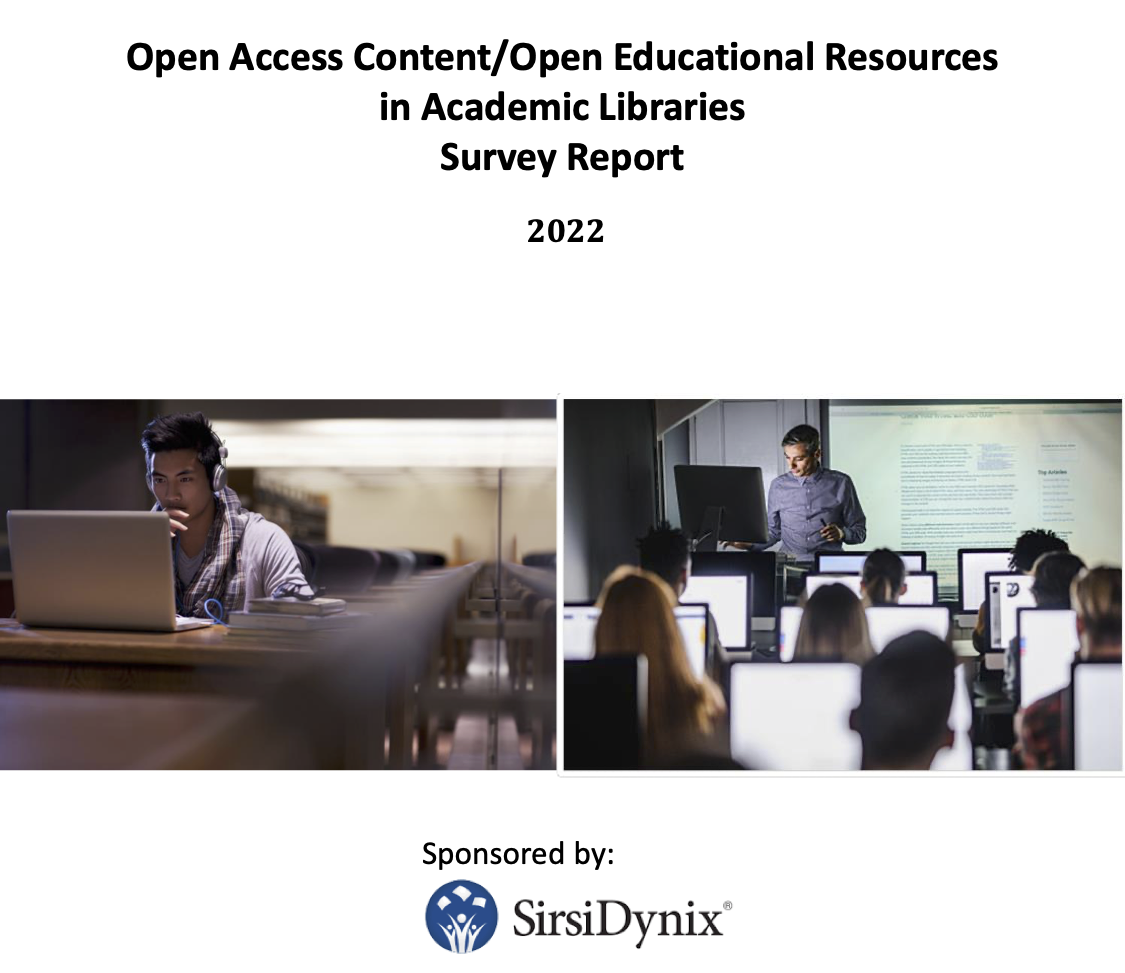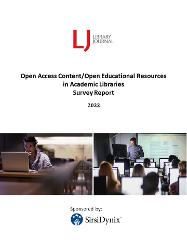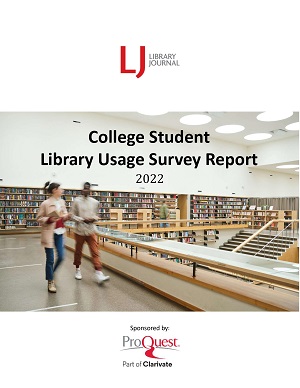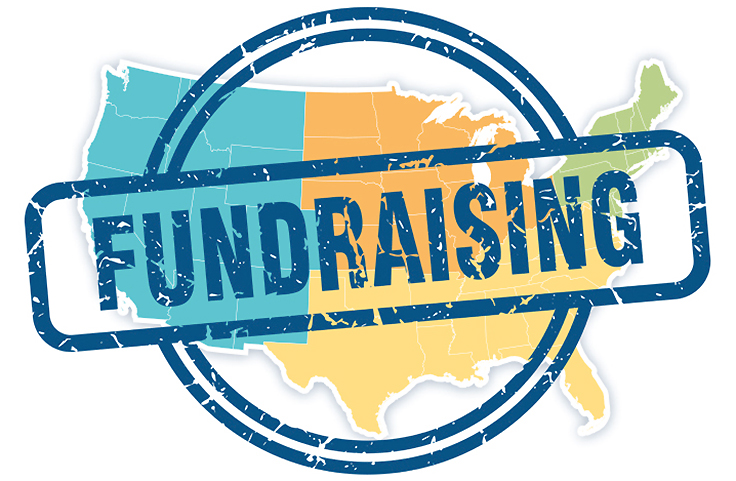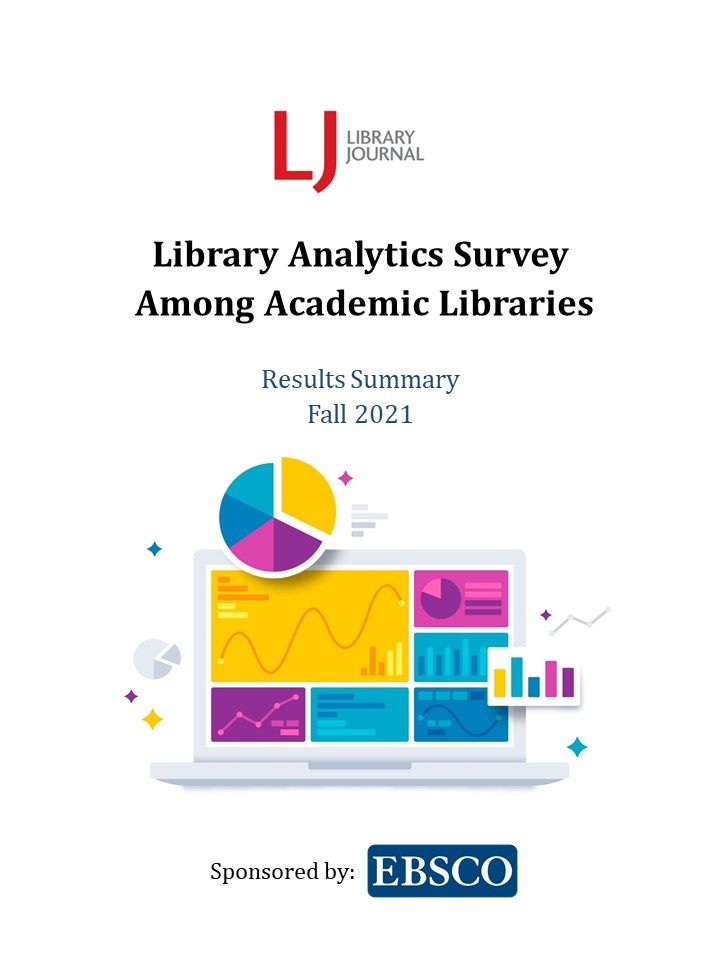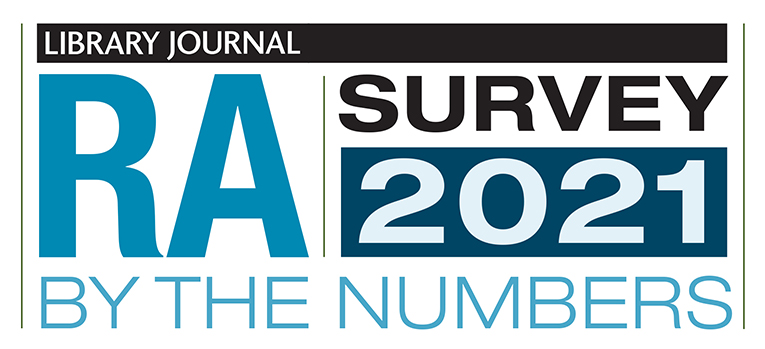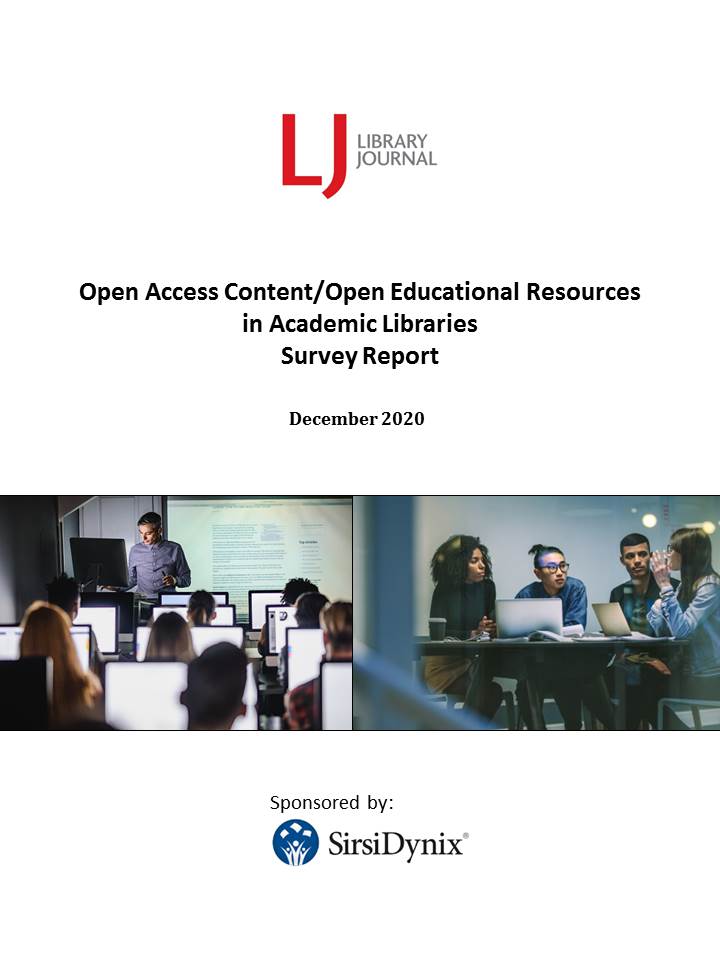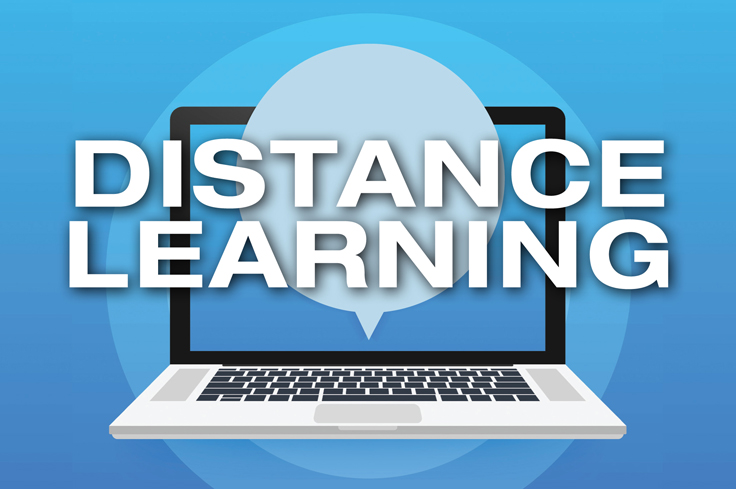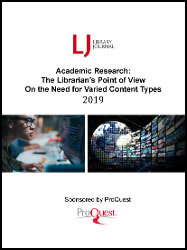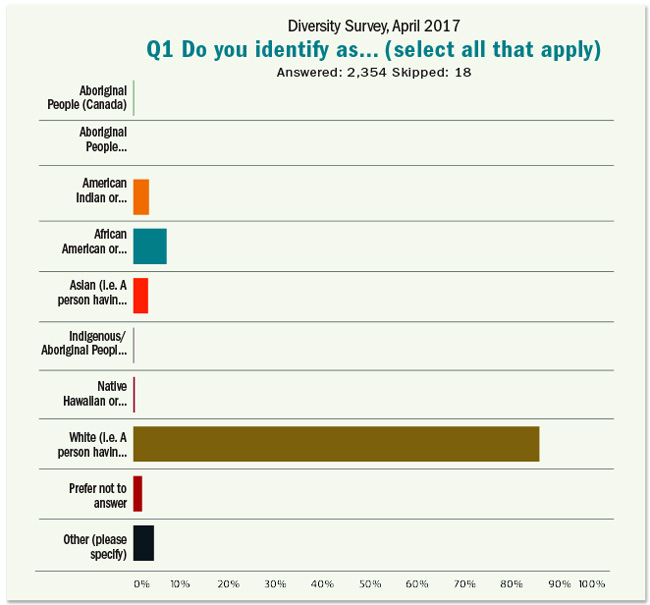Related
LJ’s 2024 Placements & Salaries Survey sees new grads grapple with questions of relocation, living wages, and job drift, but eager to begin careers in the field.
Library Journal & AM developed the AV primary sources survey to learn the extent to which library audiovisual materials are being used in colleges and universities as primary sources for scholarly research. Download your copy today
This year marks the 20th anniversary of Gale’s “Eighteenth Century Collections Online” (ECCO), the largest collection—32 million pages—of 18th-century books, pamphlets, periodicals, and other ephemera in the world. ECCO was revolutionary in providing researchers and students a text-searchable corpus at their desktops 24/7.
As more academic journals embrace open access publishing models in response to shifting requirements from funders, open access content is playing an increasingly significant role in modern research.
With new guidelines stating that by Dec. 31, 2025, all federally funded research should be made freely available to the public moving forward, the momentum toward open access publishing at colleges and universities is growing.
Research assessment, or the process that universities use to measure the value of published papers and other research outputs, plays a critical role in hiring, promotion, and tenure decisions. It can have a profound effect on the job stability and reputation of researchers.
Although lacking 2022’s dramatic job market gains, this year’s Placements and Salaries survey demonstrated a hard-won stability.
In 2022, librarians at Utah State University collected 58 survey responses and conducted 10 interviews with high school librarians and teachers in Utah to better understand information literacy instruction happening within our high schools. Along with investigating the skills being prioritized, our study looked at how teachers and librarians are collaborating as fellow educators.
Research data are the underlying evidence that supports the claims made in scholarly publications, and making these data publicly available is a fundamental aspect of open access publishing. Yet, owing to a number of obstacles—some real, some perceived—many researchers are reluctant to share their data with the broader research community.
The OSTP memo has important, and far-reaching, implications for how universities and other institutions share their research findings with the public moving forward. While it will advance the future of open-access publishing significantly, it also will impose many challenges on the academic community.
The Civic Data Education Series is an educational program for library workers to better support their civic data literacy and participation in their civic data ecosystems. Following the development of this program, Jane Thaler (Perot Museum of Nature and Science, Dallas), Eleanor Mattern, and Marcia Rapchak (both of University of Pittsburgh) shared their instructional design process and first round of evaluation in the proceedings of the 2022 Association of Library and Information Science in Education Annual Conference.
LJ and SLJ’s 2022 Job Satisfaction Survey shows that most librarians are glad they chose their career, but significantly fewer than in 2012.
In “Uprooting Racial Health Disparities: Genealogy as a Community Health Library Service,” Lynette Hammond Gerido, University of Michigan School of Public Health, studies the outcomes and affordances of genealogical and family health history research.
In “Spanish-speakers Preferred: How Libraries Can Make Their Workforce Better Reflect Their Communities,” Andrew A. Wakeleea (Fresno City College) and Kim M. Thompson (University of South Carolina) study library employment trends and offer suggestions for how to better foster a more inclusive workforce.
LJ is piloting a new column called Research Briefs, which will summarize in plain language some key takeaways of recent research on librarianship, and point to the full paper for those who want to know more. In “The Effects of Counterproductive Workplace Behaviors on Academic LIS Professionals’ Health and Well-Being,” Christy Fic (Shippensburg University of Pennsylvania) and Maggie Albro (University of Tennessee Knoxville) study how counterproductive workplace behaviors (CWB)—which include theft, sabotage, interpersonal aggression, wasted time or resources, and workplace rumors—lead to professional burnout in academic librarians and archivists.
Salaries are way up, and culture is even more important in this year’s Placements and Salaries survey.
In the archives profession, MLS/MLIS degrees are becoming more important; Black, Indigenous, and people of color continue to be underrepresented; and as many as 20 percent of workers are considering leaving the profession within the next five years. These are just a few of the findings in “A*CENSUS II All Archivists Survey Report” from Ithaka S+R and the Society of American Archivists.
As library system leaders plan for the future, they have a unique opportunity to leverage federal pandemic relief aid and build on the changes they made during the global pandemic to more effectively serve their patrons’ needs going forward.
The findings of LJ’s Public Library Materials Survey show that librarians are focused on the formats readers want and the process of crafting responsive and representative collections.
The use and visibility of open access (OA) content collections and open educational resources (OER) appear to be changing at colleges and universities, according to the results of LJ’s 2022 Open Access/Open Educational Resources Survey, sponsored by SirsiDynix. Many institutions and their libraries are placing more emphasis on helping students and faculty find those resources, but survey participants feel they are not fully satisfied with how well their search interfaces direct students to these collections, or with their frequency of use.
The report provides a comparison of results (2020 to 2022), as well as full 2022 data tables segmented by type and size of academic institution.
Library Journal and School Library Journal combine editorial & marketing expertise to conduct and present the most up-to-date library market research available.
These comprehensive and reliable reports use real data to help answer hard questions and aid decision making. Our in-house research experts conduct a variety of surveys each year focused on different aspects of public, academic, special and school libraries. Each report is made available as a downloadable pdf.
Ninety-one percent of academic librarians believe that analytics improve their understanding of how students, faculty, and researchers engage with their library, and 85 percent believe analytics can help show the library’s value to administrators and help libraries justify budget decisions, according to a recent national survey of 196 academic librarians conducted by LJ in conjunction with EBSCO.
Library Journal’s recent survey on College Student Library Usage, sponsored by ProQuest, looks at how students in American colleges and universities use their institutions’ libraries, and whether those libraries are meeting students' needs. Most are pleased with the quality of resources provided, and more than three quarters feel the library contributes to their academic success. However, the number of visits, whether in-person or virtual, are hit-and-miss—as many students use the library more than 10 times a semester as never use it at all.
The results from LJ’s Fall 2021 Public Library Fundraising Survey demonstrate how the COVID-19 pandemic changed the ways libraries conducted their fundraising. Like so much else in the library field, the pandemic forced library staff, administrators, and Friends groups to reconsider the best ways both to raise funds and utilize them.
At times, our sponsors make available valuable insights in the form of complimentary white papers or case studies that they wish to share with our audience. You’ll find descriptions and download links for these documents below.
LJ surveyed over 400 U.S. college students to measure how they use and value their university/college library. The results, from the perspective of community college and 4-year university/college students, are broken down by type of institution, online or in-person learning environments, and broad fields of study: Humanities, STEM, and Business/Education.
The University Libraries at the University of North Carolina (UNC) at Chapel Hill is using OverDrive Academic’s innovative digital reading platform to diversify its library collections by adding custom ebook and audiobook content to meet students’ desire for anytime, anywhere reading options. Download this case study.
A 2020 Library Journal survey of public libraries across the United States, developed in coordination with Spectrum Enterprise, reveals how libraries have played a vital role in bringing digital resources to stakeholders during the pandemic. Download this Case Study
Many public libraries have struggled to support their patrons’ needs with remote access to services during the pandemic.
Eight years on, readers’ advisory research shows that the service has grown in popularity and importance, but librarians need more time to read widely and practice skills.
Academic librarians are seeing more interest in open access (OA) content and open educational resources (OER) during the COVID-19 pandemic, survey respondents reported, due in part to a lack of access to physical materials and a desire to keep textbook costs low. Those are some of the findings from the Library Journal Open Access Content/Open Educational Resources in Academic Libraries Survey, released this month.
School and public librarians are joining forces to help socially distanced kids finish the school year and stay strong through summer.
Deciding whether—and when—to close doors to the public is merely the first of countless decisions that librarians have had to make during the COVID-19 outbreak. Library Journal’s survey of public library responses to COVID-19 captures the myriad behind-the-scenes choices, such as whether or not staff will continue to report to work in person after libraries are closed, that public libraries are facing as they handle the crisis.
Library Journal asked academic faculty how they viewed their roles in addressing textbook affordability in a recent survey sponsored by Taylor & Francis.
When it comes to reading for pleasure, there are plenty of similarities across all age groups. But there are also enough variations in who is reading, how they read, and where they get books, to provide useful information about generational reading habits. LJ conducted a survey of 2,232 readers with at least 400 in each age group—Generation Z (16–22), Millennials (23–38), Generation X (39–54), Baby Boomers (55–73), and the Silent Generation (74–91)—to explore those differences.
LJ's 2019 Placements & Salaries survey looked at grads entering the LIS field for their second careers and the kind of education or experience they were bringing to their new roles.
LJ's 2019 Placements & Salaries survey looked at grads entering the LIS field and discovered that the highest paying jobs are in the Pacific region, and that the regional differential between salary extremes is 59 percent larger than last year.
LJ's 2019 Placements & Salaries survey showed that the top job skill cited was again reference and information services (10 percent), but in second place for the first time was user experience/usability analysis (9 percent). This is the first year that LJ asked graduates about soft skills training in conflict resolution, cultural competency, customer service, design thinking, ethics, and leadership.
LJ's 2019 Placements & Salaries survey considered how and when LIS students and grads conducted their job searches, and learned that 44 percent are hired before they finish their degrees. Job seekers are leveraging not only traditional outlets, such as listservs and employment sites, but social media and networking opportunities, too.
LJ's 2019 Placements & Salaries survey looked at grads entering the LIS field and at the salaries they command. This provides a snapshot of graduates' job-seeking experiences at 41 ALA-accredited institutions and identifies comparative trends from previous years. Two schools are new this year, 35 schools used our survey, and six schools created independent assessments.
Recovery from the 2008 recession continues: This year’s Placements & Salaries survey indicates that graduates from LIS programs have more options and better opportunities in the field. Highlights include positive trends in salaries and employment status, gender-based pay parity, and employment in LIS institutions. Graduates placed user experience/usability analysis in the top two primary job duties for the first time.
LJ's 2019 Placements & Salaries survey learned that full-time grads earned on average 6.2 percent more than they did last year. Top earners tend to have private sector and special collections jobs.
Recovery from the 2008 recession continues: LJ’s 2019 Placements & Salaries survey indicates that graduates from LIS programs have more options and better opportunities in the field.
NEW! The academic collections survey gives the librarian’s perspective on the needs and challenges facing researchers as they discover and use the overwhelming variety of information available.
Libraries are one of the most vibrant public institutions, unmatched in their customer-centricity and their commitment to meeting community needs. Examining the library from the community’s perspective, this research and data analysis will illustrate the many ways they are transformative for the people who use them, and the cities, towns, and regions they serve.
As the cost of textbooks continues to rise, college and university students are citing increasing difficulties when it comes to paying for class materials. Library Journal ’s 2019 Textbook Affordability Survey, sponsored by Taylor & Francis Group, asked academic librarians who acquire digital and print materials for their libraries about textbook cost challenges, faculty collaborations, trends, and possible solutions.
As part of a broad range of initiatives and actions to address diversity, RWA released the results of its first diversity survey, conducted in April 2017, this June. About a quarter of RWA’s members responded, showing the membership to be largely white (86%), not Hispanic or Latinx (95%), heterosexual (88%), female (97%, of whom less than .1% were transgender), and nondisabled (79%).
England’s Lancaster University is one of the top 10 research institutions in the United Kingdom and among the top 150 worldwide. To maintain the university’s status as a premier research institution, the Lancaster University Library supports the efforts of some 1,200 faculty members throughout the research lifecycle, says Masud Khokhar, assistant director of digital innovation and research services.
ALREADY A SUBSCRIBER? LOG IN
We are currently offering this content for free. Sign up now to activate your personal profile, where you can save articles for future viewing

